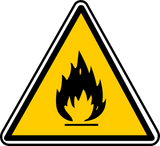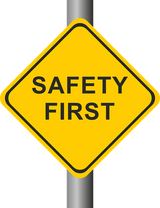What Are the Three Es of Injury Prevention?

Many jobs come with an inherent risk of injury. According to the U.S. Bureau of Labor Statistics (BLS), nearly 13,000 workers are injured per day in the United States. Some of these injuries are minor, whereas others are more severe. Regardless, working can prove dangerous, especially in certain industries. There are ways for workers to protect themselves from injury, however, one of which is to embrace the three Es of safety. What are the 3 Es of safety exactly, and how can they help you foster a safer workplace?
#1) Education
Education is one of the three Es of safety. Employers must educate workers about the potential hazards in their workplace while also providing tips on how to avoid them. All workplaces have hazards. A hazard is something that can cause injury. Unfortunately, workers oftentimes overlook common hazards in their respective workplace, which can lead to injury. Education is all about teaching workers about these hazards and how to avoid them.
#2) Environment
In addition to education, environment is one of the three Es of safety. Environment, of course, refers to a specific working environment. It's closely related to education in the sense that both involve teaching workers about hazards. With that said, environment focuses more on the specific work-related hazards, whereas education focuses more on teaching.
Depending on the type of workplace, it may suffer from the following hazards:
- Slippery floors
- Heavy machinery
- Louse noise
- Heat or cold
- Musculoskeletal disorders (MSDs)
#3) Enforcement
Finally, enforcement is one of the three Es of safety. As the name suggests, enforcement is all about ensuring that workers are complying with safety guidelines. Employers must create safety guidelines to protect workers from injury. At the same time, there are often federal and state safety guidelines that workers must follow. The Occupational Safety and Health Administration (OSHA), for instance, has guidelines known as "rules" that employers and workers must follow. Enforcement focuses on the compliance of these and other safety-related rules.
To recap, the three Es of safety consist of education, environment and enforcement. Education involves teaching workers about work-related hazards and how to avoid them. Environment, on the other hand, focuses more on the specific working environment and its unique risks to workers' health. Enforcement is simply ensuring that workers comply with all necessary safety-related rules.
Recent Posts
-
Fire Safety in the Workplace: What You Need to Know
What steps are you taking to prevent fires in your workplace? According to the U.S. Occupational Saf …Aug 23rd 2023 -
Is It Safe to Go Jogging With a Cold Infection?
If you're suffering from a cold infection, you might be wondering whether it's safe to go jogging. T …Aug 22nd 2023 -
5 Safety Tips to Follow When Using a Powder-Actuated Tool
Powder-actuated tools are commonly used to join materials to steel and concrete. Also known as Hilti …Aug 20th 2023




